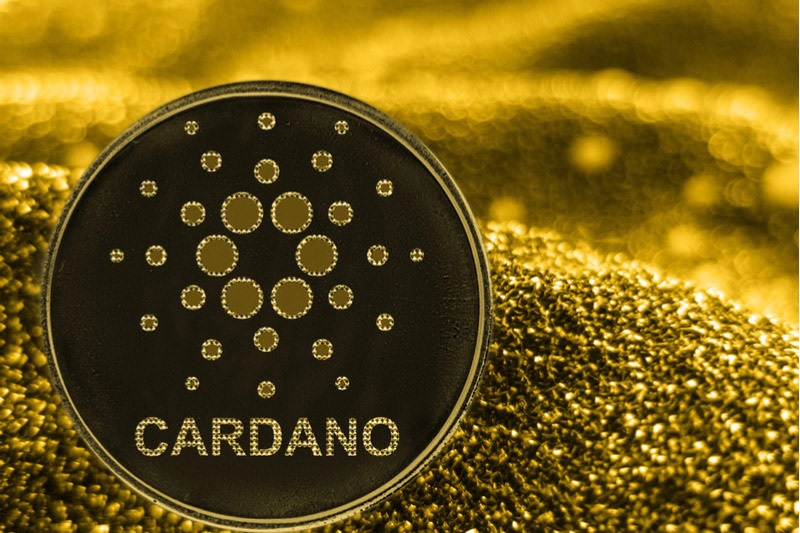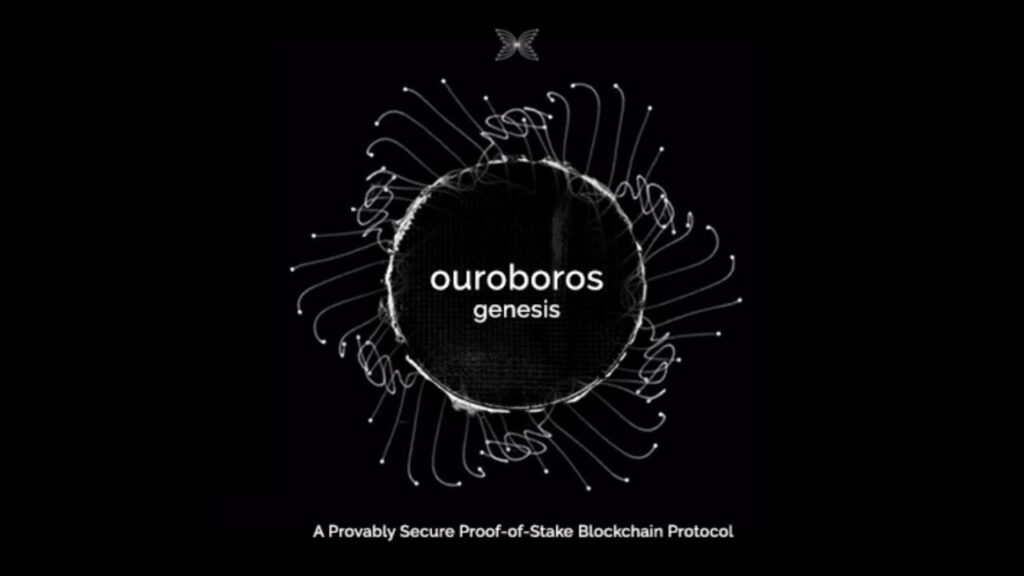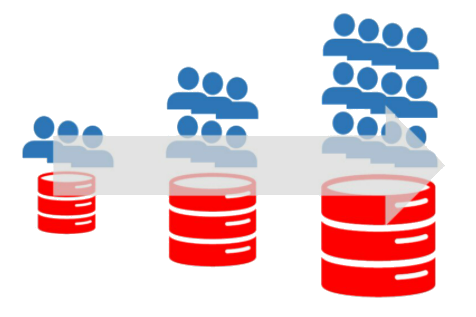In today’s post, we’re going to talk about Cardano and the cryptocurrency it operates on, which is ADA. Cardano is considered by its founders as the first third-generation blockchain. Bitcoin would be the best representative of the first generation, as it is limited to allowing simple transactions. With the introduction of Smart Contracts, Ethereum took the lead in the second generation. In the third generation, Cardano implements new developments to address the scalability, interoperability, and sustainability problems that other networks have shown up to this point.
This is also why the Cardano community considers it one of the most promising blockchain platforms. In fact, its founders and leading developers are mostly reputable scientists and researchers in the fields of mathematics, cryptography, and so on.
History
As we have discussed, Cardano was launched in 2015 to address the issues presented by its predecessor blockchains. In this way, it shares many elements with these blockchains and bases its development on the quest for a secure, scalable, and functional network. Additionally, it offers significant innovations in terms of sustainability and interoperability with other blockchains and financial institutions. To achieve all of this, they focus their work on three key concepts:
- Scalability – Thanks to this property, Cardano’s network can adapt when there is an increase in demand. To achieve this, they use techniques like data compression to optimize the capacity of their blockchain.
- Interoperability – Cardano has been designed from the ground up to support transactions between multiple blockchains, as well as different types of tokens and the most common Smart Contract languages.
- Sustainability – By using Proof of Stake, Cardano ensures the continuous growth of its network based on community participation. Additionally, Cardano implements various methods for network sustainability, such as transaction fees or retaining a portion of the mined coins.
Based on these three elements, Cardano has developed a comprehensive and innovative network. Let’s now look at all the components of this network.

Consensus protocol
Cardano’s consensus algorithm is a variant of Proof of Stake (PoS) called Ouroboros. This algorithm, as we have seen, is fast and highly scalable. In fact, Ethereum has replaced its previous Proof of Work algorithm with a PoS system in its version 2.0, largely due to scalability and sustainability concerns. It’s worth noting that, as it doesn’t require high computational efforts, it’s environmentally sustainable.
However, this algorithm had some security vulnerabilities associated with the possibility of network manipulation if a node gained too much power within it. For this reason, Cardano has implemented a series of unique developments to mitigate these shortcomings. The Ouroboros algorithm is based on four fundamental elements:
Basic elements
These are key elements of Cardano’s Ouroboros consensus algorithm:
- Epoch: Each of the units in which Cardano divides time. At the beginning of each epoch, the protocol runs to randomly select the nodes that will choose the block miners for that epoch.
- Slot: Each of the units in which Cardano divides an epoch. Each slot is associated with a single miner who is responsible for creating and verifying the block for that slot.
- Persistence: This property implies that once a block is confirmed by a validating node, the rest of the nodes will verify that block as long as they behave honestly. In other words, the block remains valid and part of the blockchain.
- Liveness: This property ensures that a transaction generated honestly is considered stable only when the block to which it belongs has been available to the rest of the participants for a certain number of time slots. This helps ensure that transactions are reliably confirmed within a reasonable time frame.
Given these concepts, let’s analyze their operation in the classic version of Ouroboros:
Algorithm process
- At the beginning of each epoch, the protocol runs, taking into account the amounts of ADA held by each eligible node, to randomly determine those who will mine the blocks for that epoch. Randomness ensures that no node can manipulate the network to be selected, so all nodes have an equal chance proportional to their ADA holdings.
- Each miner is associated with a single slot, and once the block is mined, they move to the next slot. At the end of each epoch, the protocol runs again, and miners are selected anew for the next epoch.
- To ensure that the network operates 24/7 even when not all nodes are continuously connected, a system of node grouping called “stake pools” is encouraged. In this way, the representative node generates blocks for the nodes it represents through a signature generated by them. This promotes network robustness while maintaining its security.
- Finally, the protocol incorporates several constraints to ensure the properties of persistence and liveness among nodes, which mitigate the possibilities of suffering any attacks.
Roadmap
While we’ve just seen the basic operation of Ouroboros, the actual version is far more advanced. Cardano has developed a roadmap that it has been implementing to optimize the algorithm’s performance. These are the versions that have been developed so far:

- Ouroboros Classic – The first version of the algorithm.
- Ouroboros BFT – This version of the algorithm was used as a bridge during the network’s code migration. In reality, it’s only a special case of the first version.
- Ouroboros Praos – This version incorporates significant improvements in terms of network security. These improvements are mainly based on randomness in the selection of validating nodes.
- Ouroboros Genesis – This version allows new participants to connect and start from a genesis block without the need to verify previous blocks. It’s the version currently in operation.
- Ouroboros Chronos – This is the latest planned version for implementation. Its main contribution is network-wide clock synchronization without dependence on external sources. This enhances security and improves network resilience.
In addition to the mentioned algorithm versions, Cardano continues to work on improving its protocol. Therefore, it is not unlikely (quite the opposite) that they will continue to develop new enhancements for it. After all, Cardano is one of the blockchains that strongly emphasizes the development, innovation, and research of blockchain technology and all its components.
Transactions management
Transaction management in Cardano is not significantly different from that of any other blockchain, at least not in terms of its general operation. However, its incorporation into the blockchain is somewhat different from other networks like Ethereum.
Until now, we have always talked about miner nodes as the nodes responsible for generating blocks and incorporating them into the network. However, while in other networks these miners also select the transactions for each block, this is not the case in Cardano. An additional figure is introduced, which is the “transaction endorser” (they define it as an “input endorser”).
This endorser is simply another node, selected at the same time as the miner, whose function is to select the transactions that will be included in each block. When the miner is selected, they simply choose the most recent transactions previously selected by the endorser and create the new block for the network.
In the event that multiple endorsers choose the same transaction to include in a block, only the one selected first will be added. This system achieves, on one hand, a greater level of democratization in the network by allowing the participation of a larger number of nodes. On the other hand, it reduces the risk of manipulation by these nodes, as it requires the additional collaboration of the endorser.
Wallet
Additionally, Cardano has developed its own ADA wallet called Daedalus, which is optimized to integrate with the Cardano network. This way, Cardano completes the full circle from the origin to the complete record of transactions, doing so internally to continue optimizing the entire process.

Finally, it’s worth noting that, unlike some other blockchains, Cardano divides its operation into two layers to facilitate the addition of functionalities and improve network scalability. On one hand, there’s the base layer (CSL) that maintains all the transaction records, consensus rules (Ouroboros), reward issuance, and more.
On the other hand, there’s the secondary layer (CCL), which is responsible for maintaining all the information about what happens with transactions after they have been recorded. This is where, in the future, Smart Contracts can be deployed or additional consensus rules can be added without affecting the basic operation of the network.
Mining
Cryptocurrency mining on any network is directly related to the operation of the consensus algorithm. As we’ve explained, mining involves the creation of new cryptocurrencies by miners, who are the nodes responsible for adding blocks to the blockchain. When a miner successfully adds a block, they receive a reward. This reward includes the fees paid in each transaction, plus a small reward with newly created coins. The latter is not common to all blockchains but is present in Cardano.

In Cardano, the total amount of ADA to be issued is limited to 45 billion, so it has a deflationary structure similar to Bitcoin. When Cardano was introduced, it did so through a “public offering” in which it issued a total of just over 31 billion ADA. Of these, 5 billion were allocated to the three entities involved in its development: EMURGO, Cardano Foundation, and IOHK.
Furthermore, its reward system is mathematically optimized to take into account not only the amount of ADA left to be issued but also the epoch of each block and participation in stake pools. This way, the entire “collection” of each block (both rewards and fees) is distributed proportionally to their ADA stake between miners and endorsers, discouraging network manipulation.
Conclusion
We have seen the main features of the Cardano network starting from the most classic version of its algorithm. However, Cardano is one of the networks with a long road ahead, not only due to the planned development outlined in its roadmap but also because some of the most determining factors, such as Smart Contracts and the deployment of Decentralized Applications on its network (DApps), have not yet been implemented.
As a source of opportunity, it’s clear that Cardano’s transparency and scientific rigor work in its favor. It is one of the networks that places the most emphasis on scientific publications, providing very detailed explanations of each of its developments. This allows for a much more comprehensive understanding of its operation, which, being open-source, facilitates its constant improvement.
On the other hand, many of the functionalities that are designed or pending implementation do not yet have widespread recognition due to their lack of history. Therefore, we will have to wait some time to see if it meets expectations and becomes an improved form of current blockchains or if it fails to address the vulnerabilities faced by these types of decentralized systems.
In any case, it remains a very interesting network that is undoubtedly trying to distance itself from the models seen so far, with a much more ambitious and scientifically rigorous approach.



